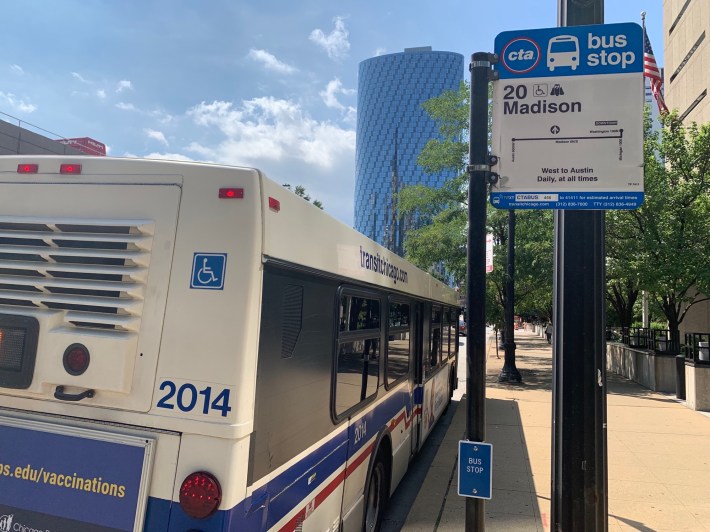
Tulsa, Oklahoma, is getting ready to build a new flagship park, called A Gathering Place -- a $350 million project supported entirely by private foundations, most notably the Kaiser Family Foundation. The park will contain a skate park, sports fields, a boat house, views of the Arkansas River, a "swing hill" and all sorts of other goodies. But thanks to Mayor Dewey Bartlett, it might lack one very basic amenity: sidewalk access.
A few months ago, Bartlett, who is also president of the Keener Oil and Gas Company, issued an executive order eliminating plans for a sidewalk connection on Riverside Drive, an important north-south street that fronts the park and connects to downtown, not far away.

The finished park is expected to draw about 1 million visitors a year. But will any of them walk without adequate pedestrian access?
A growing coalition is demanding the the sidewalk be reinstated. About 300 people packed a City Council meeting late last month urging city officials to maintain pedestrian access. Because of fire codes, supporters actually had to be turned away, says Bill Leighty of the Smart Growth Tulsa Coalition, which has been organizing the campaign for sidewalks.
Leighty says the mayor's decision violates the city's complete streets program and seems to have been motivated by prejudice against people who would walk to the park.
Early in the planning process, he said, "some meetings were held with the adjoining neighborhoods. There was an enormous amount of opposition from those neighbors, for reasons that are suspect, I would say. They didn’t want 'undesirables' coming to their neighborhood."

The historic neighborhoods surrounding the park are very wealthy, and the local press has reported on relationships between nearby property owners and the mayor that may present a conflict of interest. Bartlett's Keener office, for instance, rents space from a member of the Maple Ridge Homeowner's Association, which opposes the sidewalk, reports the local CBS affiliate. (The city auditor concluded that Bartlett did not violate ethics rules.)
Bartlett contends that a sidewalk on Riverside Drive would not be safe for pedestrians -- because speeding drivers might mount the sidewalk and injure people. Instead, the anti-sidewalk contingent has proposed a circuitous park access route that would compel people to walk on a bridge over Riverside Drive and through some trails.
Leighty says the safety concerns are "a smoke screen" to obscure the fact that opponents simply want to keep people on foot away from their neighborhood. The sidewalk proposal, he says, is much safer than what you find on most other Tulsa streets.
"There are ways to slow the traffic down and maybe tighten the lanes and do things that would lower the speeds," he said.
Rather than calming traffic next to his city's new flagship park, Bartlett has said he wants to wait until the park is complete and then reevaluate the sidewalk. That would mean Tulsa residents might have to wait years for pedestrian infrastructure that is supposed to be a standard on all streets, and residents of growing neighborhoods north of the park would be left without walking access.
Leighty says advocates for a livable Tulsa view this as an important fight for the future of the city. "We have a great comprehensive plan, we have great complete streets policies, we have other plans that are in place to help us move forward and change," he said. "But when the big issues come up we tend to miss out."
He cited Tulsa's failed parking reform effort as an example of how important reforms can get tossed aside the moment a specious concern is officered by local power brokers.
"There’s an enormous appetite for change, and the tide is turning but it’s like a steamship," Leighty said.



